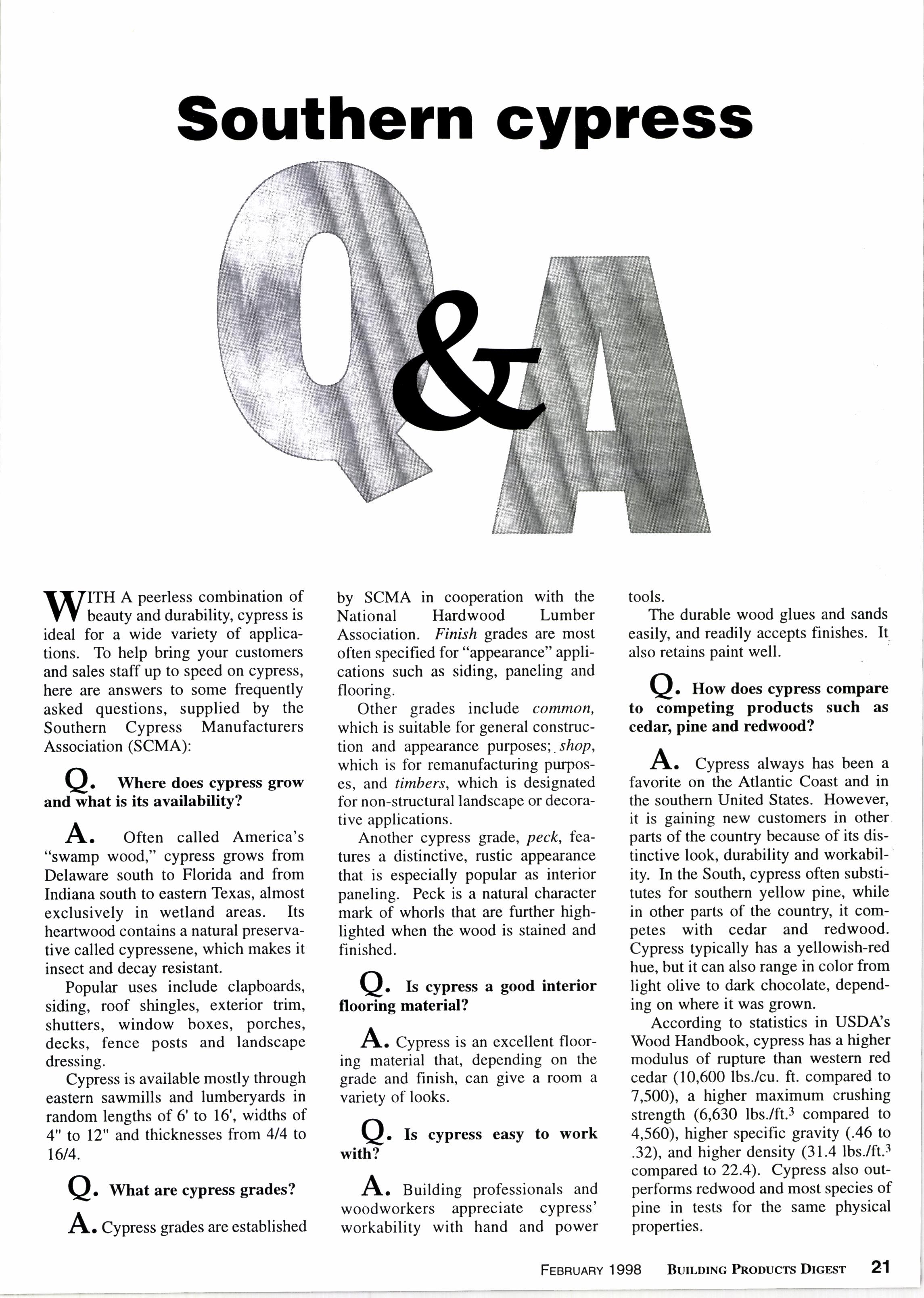
1 minute read
Southern cypress
IXIITH A peerless combination of Y Y beauty and durability, cypress is ideal for a wide variety of applications. To help bring your customers and sales staff up to speed on cypress, here are answers to some frequently asked questions, supplied by the Southern Cypress Manufacturers Association (SCMA): by SCMA in cooperation with the National Hardwood Lumber Association. Finish grades are most often specified for "appearance" applications such as siding, paneling and flooring.
Q. where does cypress grow and what is its availability?
A. Often called America's "swamp wood," cypress grows from Delaware south to Florida and from Indiana south to eastem Texas, almost exclusively in wetland areas. Its heartwood contains a natural preservative called cypressene, which makes it insect and decay resistant.
Popular uses include clapboards, siding, roof shingles, exterior trim, shutters, window boxes, Porches, decks, fence posts and landscaPe dressing.
Cypress is available mostly through eastern sawmills and lumberyards in random lengths of 6' to 16', widths of 4" to 12" and thicknesses from 4/4 to 1614.
Q. wn", are cypness grades?
Other grades include common, which is suitable for general construction and appearance purposes;.sltop, which is for remanufacturing purposes, and timbers, which is designated for non-structural landscape or decorative applications.
Another cypress grade, peck, features a distinctive, rustic appearance that is especially popular as interior paneling. Peck is a natural character mark of whorls that are further highlighted when the wood is stained and finished.
Q. Is cypress a good interior flooring material?
A A. Cypress is an excellent flooring material that, depending on the grade and hnish, can give a room a variety of looks.
Q. t, cypress easy to work with?
A A. Building professionals and woodworkers appreciate cypress' workability with hand and power tools.
The durable wood glues and sands easily, and readily accepts finishes. It also retains paint well.
Q. uorn does cypress compane to competing products such as cedar, pine and redwood?
A A. Cypress always has been a favorite on the Atlantic Coast and in the southern United States. However, it is gaining new customers in other parts of the country because of its distinctive look, durability and workability. In the South, cypress often substitutes for southern yellow pine, while in other parts of the country, it competes with cedar and redwood. Cypress typically has a yellowish-red hue, but it can also range in color from light olive to dark chocolate, depending on where it was grown.
According to statistics in USDAs Wood Handbook, cypress has a higher modulus of rupture than western red cedar (10,600 lbs./cu. ft. compared to 7,500), a higher maximum crushing strength (6,630 lbs./ft.r compared to 4,560), higher specific gravity (.46 to .32), and higher density (3l.4lbs./ft.r compared to 22.4). Cypress also outperforms redwood and most species of pine in tests for the same physical properties.










